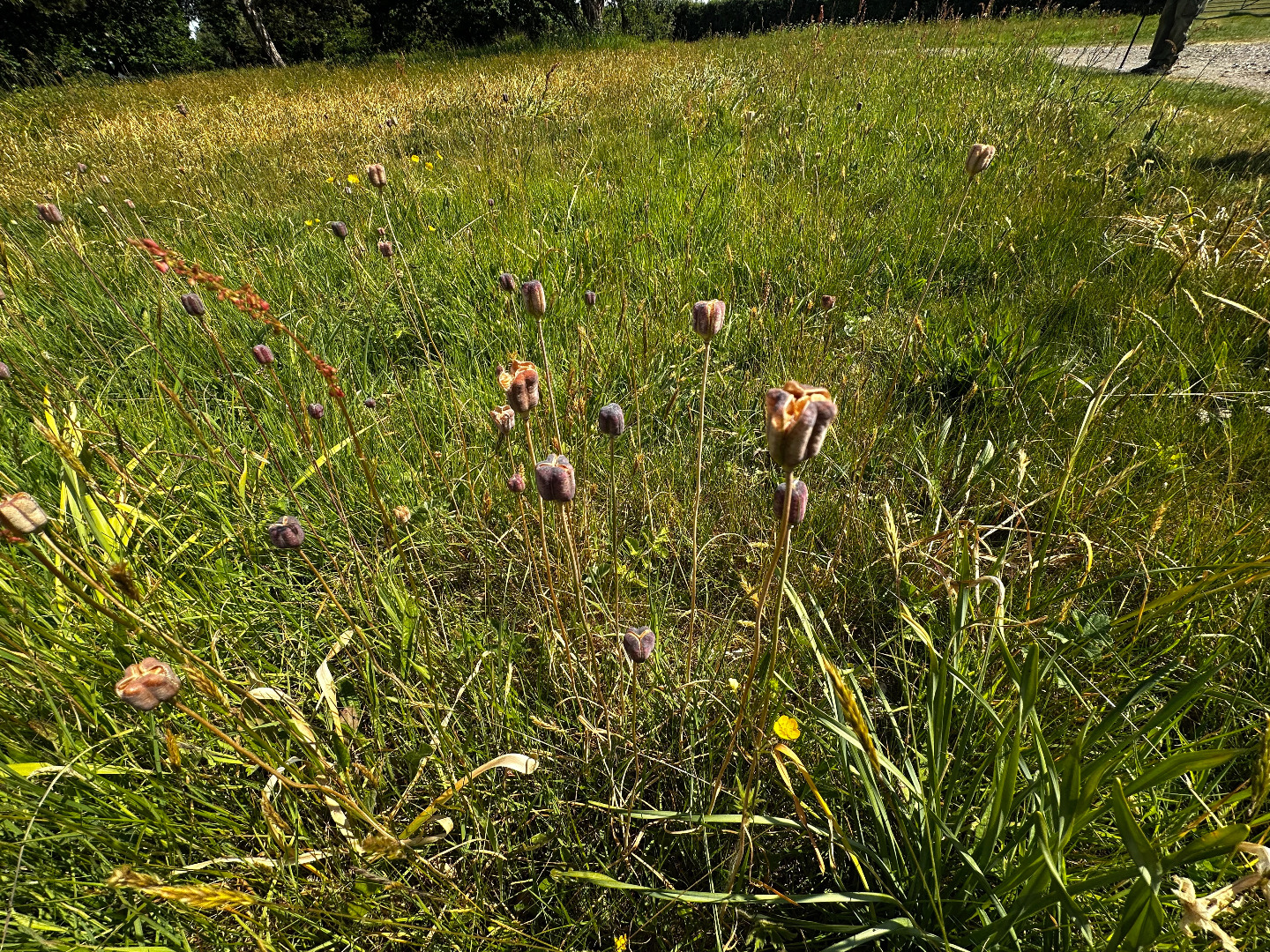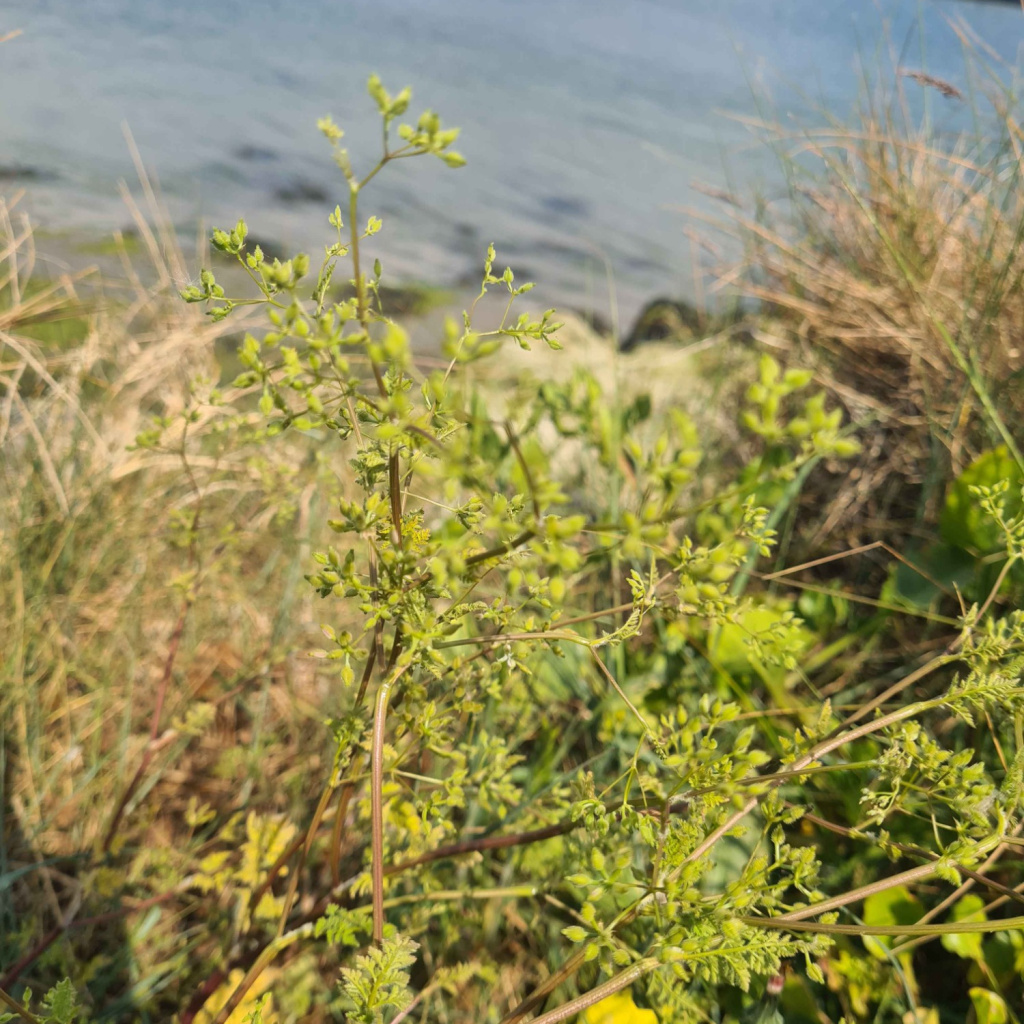Cobnor Point visit. Leader Diana Beale. 20May 2025
Chichester Harbour is an Area of Outstanding Natural Beauty (AONB) and Cobnor Point is a particularly beautiful and peaceful area that has been cared for by the Beale family for the last 100 years. We were delighted that Chi Nats member, Diana Beale, offered to host members for a visit to this special place.
Sixteen of us gathered to hear about her family’s involvement before we set off for a walk. Diana’s grandparents, Sidney and Margaret, bought Cobnor House and its accompanying 80 hectares of land at an auction at The Dolphin in Chichester just as the First World War was coming to an end. They ran the estate as a small mixed farm and were also able to pursue their interests in sailing (Sidney) and painting (Margaret). Hence the boat house with artist studio above, that they built in 1931. Their son, Martin, dedicated much energy and imagination to the harbour. He was a founder member and first chairman of the conservancy’s advisory committee and chairman of the conservancy from 1978 to 1982. He also established the Cobnor Activities Centre Trust and it was lovely to hear the excited cries of the children out on the water. Diana’s aunt, Joan Edom, became the Harbour’s first conservation warden and she started the bird walks (still held in her name) and bird counts back in the 1970s. Martin’s daughter, Diana, our host and leader for the afternoon has taken several green initiatives further. Much of the arable land has been sold and some remaining fields are leased to local farmers. The core 30 hectares on Cobnor Point are managed for biodiversity. This has been partly enabled through various environmental stewardship schemes. Diana has her ‘fingers in a lot of pies’!
So, off we set, leaving the meadow which must have earlier been a fine sight of daffodils, snake’s-head fritillaries (their seed heads still present) and Star of Bethlehem. From the useful, wheelchair-accessible path Diana pointed out the reed beds managed by the Chichester Wild Fowlers Association - Reed warblers are back in residence. Sightings as we walked along the harbour edge included the rare Bur Chervil, Black Mustard and Bastard cabbage as well as Greater black-backed gull over on a spit. To our right was an area where Kingfisher can often be spotted and also where rewilder, Derek Gow, was involved with capturing 13 water voles, increasing that number to over one hundred ( ! ) which were then available for release in new areas. On ‘Martin’s bench’ two visiting artists were recording the mesmerising scene which, further on, stretched out to the harbour entrance and the Isle of Wight. We stood entranced, with a kestrel hovering overhead, whilst listening to Diana tell us about the Stake Island in front of us, originally developed in the 1800s in an attempt to claim land for agriculture. Now it is part of the ‘Return of the Tern’ project together with the creation of several new tern rafts. Instead of continuing along the coast to the Joan Edom bird hide we turned inland passing three fine Hereford cattle and into the woodland maintained by the family. The oaks and understorey including Butchers broom were admired plus the intriguing remains of the webbing produced by Spindle ermine moth caterpillars. Courtesy of the Merlin App, Black cap, Blue tit, Blackbird, Robin, Wren, Plover, Chaffinch, Green woodpecker and Chaff chaff were recorded over a period of just 5 minutes.
Then it was tea and biscuits in the garden, what a treat!
Many thanks to Diana for a most interesting and enjoyable afternoon.
Gill Hance

Snake's head Fritallary seedpods

Bur Chervil

Seedhead of Smith's Pepperwort

Chichester, West Sussex
|